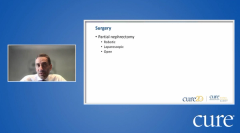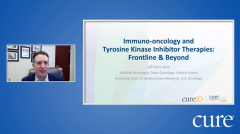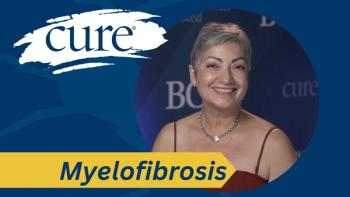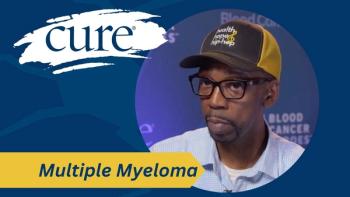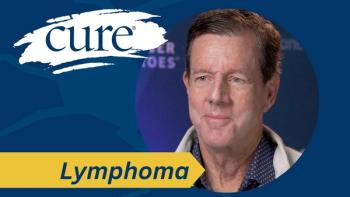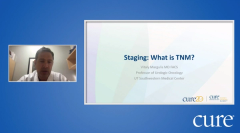
Educated Patient® Kidney Cancer Summit Panel on Side Effects from Immunotherapy/TKI Combo Treatment: April 9, 2022
Watch Dr. Thomas Hutson, Louise Gunter and Meryl Uranga discuss side effects and dose reductions after treatment with immunotherapy combined with tyrosine kinase inhibitors, during the CURE Educated Patient Kidney Cancer Summit.
Episodes in this series

This panel was moderated by Kristie L. Kahl and featured Dr. Thomas Hutson, Louise Gunter and Meryl Uranga.
Kahl: I want to shift gears to talk about side effects and dose reductions. So Louise, I know you're going to be talking about this a little bit later, but can you just briefly review some of the side effects that are commonly associated with IO/TKI combinations?
Gunter: Sure. So I will definitely speak to these in detail in an upcoming session. But the main ones we see in clinic seem to be fatigue, high blood pressure, decreased appetite, nausea, thyroid problems, both overactive and underactive, but mostly underactive. We see mouth sores that can be quite painful. And cough.
Kahl: Okay, great. And so Meryl, I know, you kind of mentioned your side effects before and being treated with the steroids. So can you just talk about what was done to treat the side effects you experienced from your combination therapy?
Uranga: The main side effects that needed immediate treatment for me was the blood pressure control. I've had a very interesting experience, just now actually, with that, because I had to take a fairly long break for some dental work. And I resumed back to my (Inlyta [axitinib]) TKI, and it was like starting all over with the blood pressure. It had settled down before. And so I guess the best way to describe it is it really requires constant monitoring. I have to monitor the blood pressure and manage the dosage for the drug that I've been prescribed for it. My experience has been that it has settled down once, when I had a dose increase, recently. It had to be managed again. But then it settled down. And now after this break, restarting, I had a huge spike again, and it had to be managed. And then it made me settle down again.
I think that the key take-home message from this for side effects or any of the side effects of TKIs, which have already been noted, is that they ebb and flow. And they change with time. And that has been my experience. it's a little complex when you're dealing with the double therapy because you don't know sometimes. For example, thyroid issues, I've had underactive hypo thyroid issues, which I take a supplement for as well. I don't know where that's coming from. It could be the immunotherapy, it could be TKI. That is a side effect of both of those classes of drugs, from my understanding, so we just manage it. We keep an eye on it. The dosage, again, occasionally has to be tweaked depending on what's going on, but it's all kept after. And then there are other minor, more manageable type of side effects like mouth issues, sores or sensitivity, that, again, are managed case by case. Fairly simple to do.
Kahl: Great. And you had just mentioned tweaking the doses. So, Dr. Hutson, can you explain what a dose reduction is? Why do we do it? Is it a bad thing, that we have to dose reduce?
Hutson: Let me put all the myths aside. Dose reduction is not a bad thing. We give a standardized blanket dose. In many cases, it's not even weight based. It's just a standardized dose. And, we should all know by now that every person is an individual and we need to adjust the dose to the individual patient's body. Some people will metabolize a drug a certain way, that actually when they take one dose, they're getting a higher dose. Others get lower doses.
And so the only way we can figure that out – because we don't have blood tests, we're not testing drug levels – is the side effects people have. In what we're achieving on our imaging studies, and the biggest comfort for patients and caregivers should be that in the pivotal trials that were done, dose reductions were common. In fact, what I would consider state-of-art, are the best initial therapies that we utilize, have sometimes two-thirds or more of patients on those trials requiring dose reductions.
We want to try to start everyone at full dose to let side effects declare themselves, because we would have no other way to know if you're one of the 20% or 30% of patients that need to be at the higher dose unless we start there. And then if we do find side effects, because it is a marathon with these cancers, that we need to lower dose to make the quality of life better so that people can sustain therapy, then we lower the dose. And in the trials, that is indeed what happened, and those patients did go on to receive good benefit. And so, just keep that in mind. And I know myself and Louise, that's one of the biggest things we stress at the beginning of starting a new therapy. We want to set the expectations to the patient of what they're looking at. And that is the first part of the discussion, is that we're going to start at a dose, but that is not necessarily the dose that you're going to stay at. We're going to individualize that with you, and you're going to be an active participant in those discussions.
Kahl: Absolutely. And so Louise, I think we commonly hear, “if I tell my doctor about my side effects, they're going to take me off the drug.” Can you dispel any misconceptions that are associated with side effects from treatment?
Gunter: Well, definitely having side effects actually is associated with the drug in your body. And as Dr. Hutson just discussed, we don't really know the correct dose for you until the side effects present themselves. And so a dose reduction does not mean that the drug won't work, or that it will be less efficacious.
Kahl: Absolutely. And so how do you handle those conversations with the patients if there is a concern that a side effects might have to result in reducing a patient's dose?
Gunter: You know, I just really try and assure patients that side effects are an indication that the immune system is responding to the drug. And that really, it's all about balancing the extent of the side effects with safety and quality of life.
Raw transcriptions have been lightly edited for clarity.
For more news on cancer updates, research and education, don’t forget to



